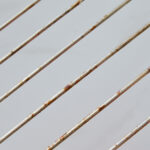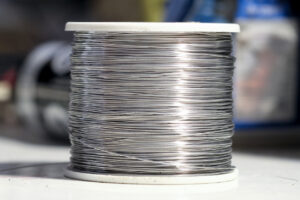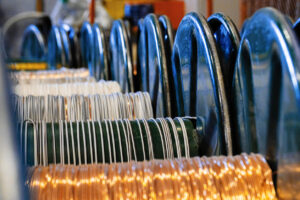The world of electrical engineering and DIY projects is ever-evolving, with materials and components constantly being refined for better performance and versatility. Among these, the Ni60 alloy stands out as a material of choice for myriad applications.
Known for its impressive strength and corrosion resistance, Ni60 is a nickel-chromium alloy that has been adopted widely due to its thermal and electrical properties.
This particular alloy exhibits excellent resistance to high-temperature oxidation and remains stable under varying environmental conditions, making it an exceptional choice for crafting high-quality coils.
In the realm of electrical applications, the concept of resistance is fundamental. Resistance, measured in ohms (Ω), is a material’s opposition to the flow of electric current. It is not merely a barrier; it’s a way to control and harness the energy that passes through an electrical circuit.
In coils, especially those used in electronics and heating elements, resistance is what governs the current’s intensity and the amount of heat produced. This is why understanding and selecting the correct resistance is critical for the safety and efficiency of any project.
Throughout this article, we will delve into the nuances of Ni60 Flat Clapton coils, exploring their resistance ranges and how they apply to various uses. We will compare the specifications of the diverse offerings, discuss the implications of different gauges, and provide insights into selecting the ideal coil for your specific needs. Whether you’re a seasoned engineer or a curious enthusiast, this guide will equip you with the knowledge to make informed decisions about Ni60 Flat Clapton coils and their role in your projects.
Let’s go…
Understanding Resistance in Coils
Ohm’s Law, a fundamental principle in the field of electricity, states that the current (I) flowing through a conductor between two points is directly proportional to the voltage (V) across the two points and inversely proportional to the resistance (R) of the conductor.
This relationship is elegantly expressed in the equation I = V/R. In practical terms, this law becomes critical when designing and using coils, such as those made from the Ni60 alloy.
The resistance dictates how much current will flow for a given voltage, which in turn impacts everything from the heat generated to the power consumed.
Resistance in coils is commonly expressed as ohms per meter (Ω/m), providing a standardised way to measure and compare how different coils will react when current is applied. This measurement is crucial because it allows for precise calculations of how a coil will function within a circuit, whether it’s being used as a heating element, inductance coil, or other applications where electric currents interact with magnetic fields.
The American Wire Gauge (AWG) size of a coil wire plays a significant role in determining its resistance. The AWG system is based on a series of wire diameters, where a higher gauge number indicates a thinner wire. Thinner wires have higher resistance because there’s less area for the current to flow through, while thicker wires (lower AWG number) have lower resistance.
For instance, a 24 AWG Ni60 Flat Clapton coil will have a higher resistance per meter compared to a 22 AWG coil made from the same material. Understanding the relationship between AWG sizes and resistance is essential when selecting the right coil for your project, as it affects both the efficiency and the performance of the application it is intended for.
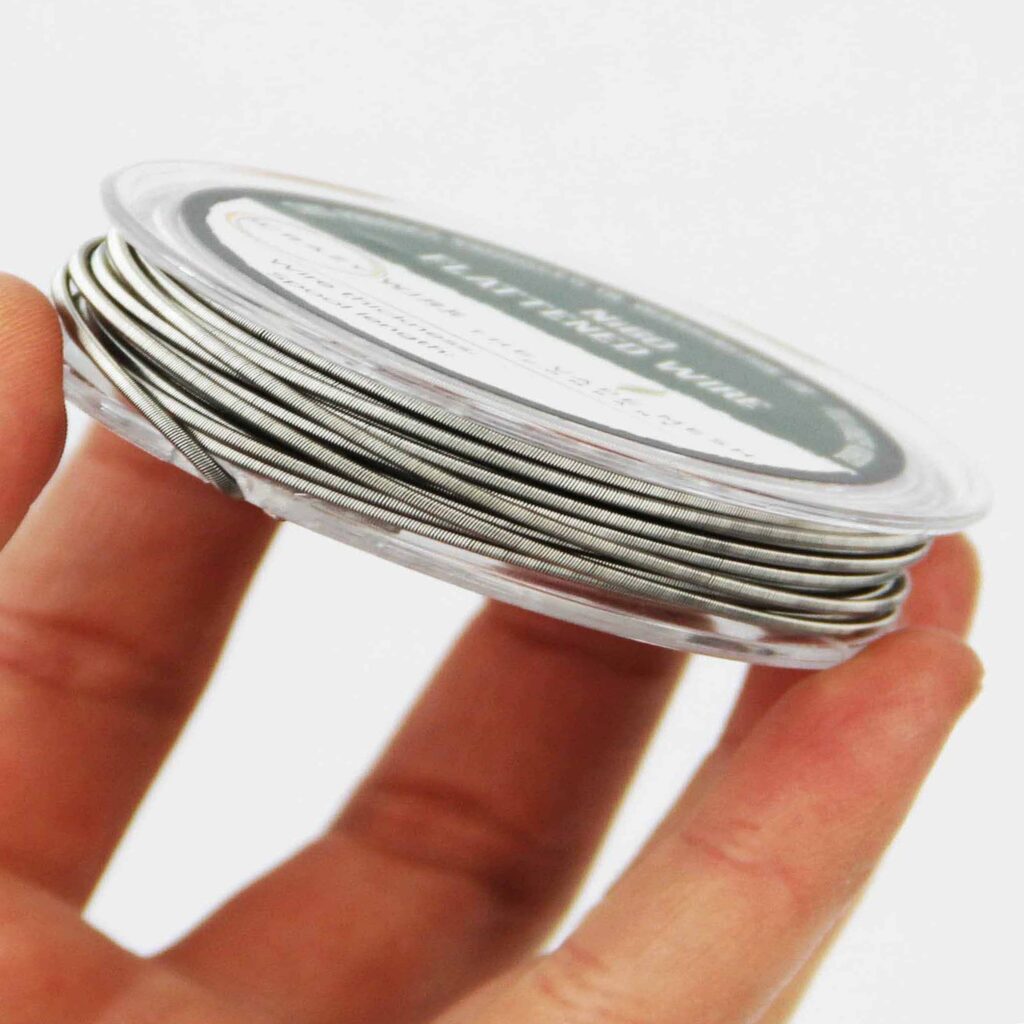
The Ni60 Flat Clapton Coil Range
Ni60 Flat Clapton coils are a specialised kind of wire used in various applications that require precise control of electrical current and heat. Coils made of Ni60 alloy are known for their flat, ribbon-like core that is meticulously wrapped in a thinner wire gauge. A unique coil construction not only increases surface area, but also improves heat distribution and electrical conductivity. The “Clapton” nomenclature reflects the intricate wrapping technique used to achieve the guitar string-like appearance.
Ni60 Flat Clapton coils are available in a wide variety of specifications and designs to meet diverse requirements. As the American Wire Gauge (AWG) size of both the core and the wrapping wire is altered, different levels of resistance can be achieved. Coils of this type can have resistance levels ranging from 1.80 ohms per meter (Ω/m) up to 6.30 Ω/m. Users can choose between different resistances based on their needs, whether they need lower resistance for high current applications or higher resistance for applications that require less current and more heat.
There is a clear pattern in the resistance levels across different AWG sizes: as the AWG number decreases, the resistance per meter decreases. Conversely, a higher AWG number, which indicates thinner wire, correlates with higher resistance. For example, a 25 AWG Ni60 Flat Clapton coil with a 38 AWG wrapping (25/38 AWG) yields a resistance of 6.30 Ω/m, while a 19 AWG core with a 32 AWG wrapping (19/32 AWG) yields a resistance of 1.90 Ω/m. In this example, we can see how changing the core or wrapping wire affects the coil’s overall resistance.
Selecting the Right Ni60 Flat Clapton Coil
It is important to balance technical understanding and practical considerations when selecting a Ni60 Flat Clapton coil. A coil’s gauge and resistance will determine its suitability for a particular application. A coil with a lower gauge and lower resistance would be ideal if your project requires rapid heating and substantial current flow. In contrast, applications requiring controlled, moderate heating may benefit from coils with a higher gauge and resistance.
To illustrate this selection process, let’s look at a couple of case scenarios. Consider the first scenario, where you need a coil for a high-performance heater element that must heat up quickly. In this case, you might opt for a 20 AWG Ni60 Flat Clapton coil with a 36 AWG wrap (20/36 AWG), which offers a lower resistance of 2.00 Ω/m, ensuring that more current can pass through, thus generating more heat swiftly.

A 24 AWG coil with a 32 AWG wrap (24/32 AWG) would be more appropriate for a precision heating application with a lower current draw. Because of its higher resistance, the heating process would be slower and more controlled.
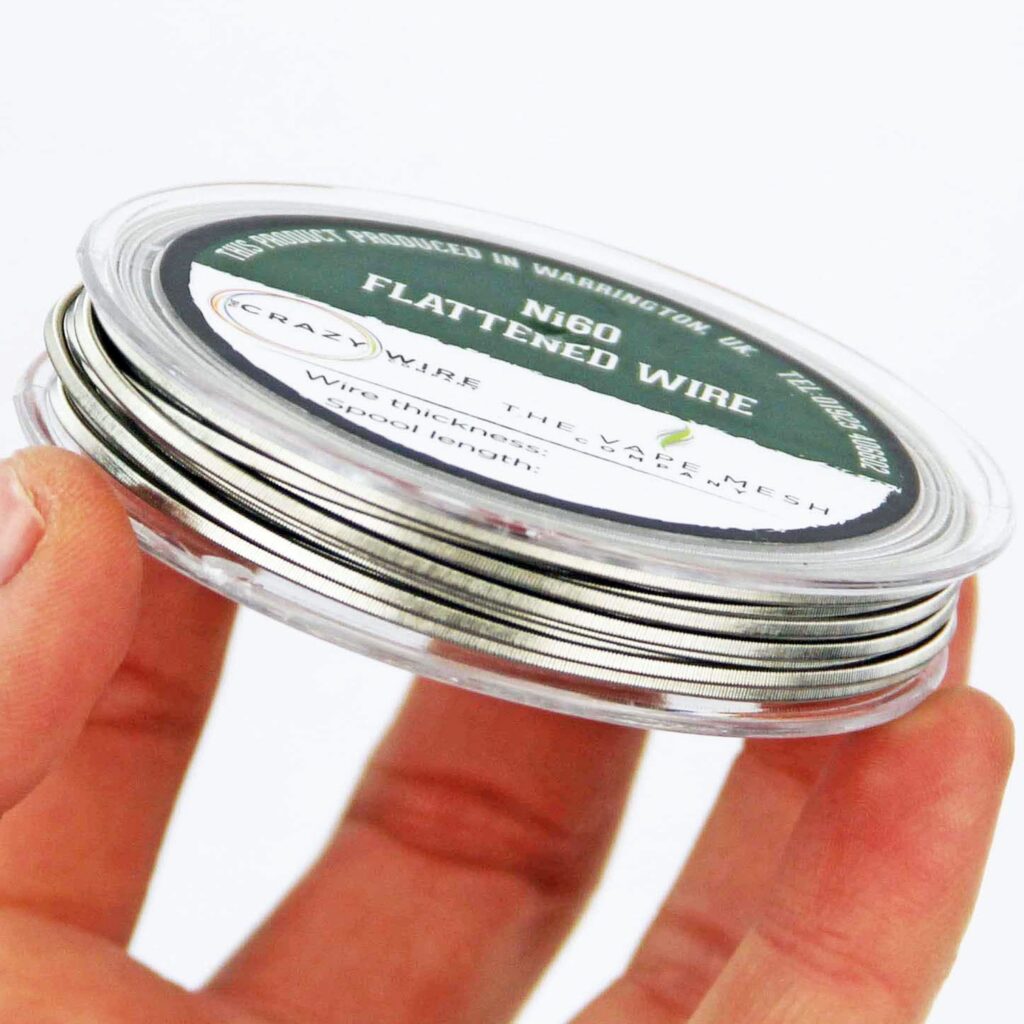
In addition to coil attributes, it is important to consider the coil’s thermal conductivity, its maximum operating temperature, and its physical dimensions in the given environment. Temperature fluctuations in the operational setting can also affect resistance. With these factors in mind, you can select a Ni60 Flat Clapton coil that not only meets your current requirements, but also offers long-term durability and reliability.
Applications of Ni60 Flat Clapton Coils
Ni60 Flat Clapton coils are versatile components used in a variety of applications beyond the realm of vaping, which is not our focus here. Their unique design and material properties make them suitable for use in small-scale heaters, precision laboratory equipment, and even in some musical instrument pickups where thermal stability and electrical resistance are crucial.
One of the primary benefits of using Ni60 Flat Clapton coils in these applications is their increased surface area compared to standard wire coils. This allows for better heat distribution when used in heating elements, ensuring a more uniform temperature profile. In laboratory settings, such as in the heating stages of microscopes or in specialised incubation chambers, this can lead to more accurate and consistent results.
In the world of musical instruments, particularly electric guitars, the fine-tuning of pickups using such coils can influence the electromagnetic field and thus the tone produced by the instrument. The Ni60 alloy’s stability across temperature variations ensures that the coil’s resistance remains consistent, keeping the sound quality uniform.
Installation and Handling
Installing and handling Ni60 Flat Clapton coils requires careful attention to detail to ensure safety and performance. Before installation, it’s essential to understand the electrical specifications of the coils and the requirements of the application to ensure compatibility. When installing the coil, it’s crucial to make secure connections to prevent any potential short circuits.
Safety precautions during use include verifying that the coils are not overpowered, which could lead to overheating and potentially hazardous situations. It’s also important to handle the coils with protective equipment if they are being used in high-temperature applications to avoid burns or other injuries.
Maintenance and Longevity
Ni60 Flat Clapton coils should be regularly inspected for signs of wear or damage, such as corrosion or physical deformities in the wire, in order to maintain optimal performance. It is also important to keep the coils clean and free of debris to prevent any unintended insulation that could adversely affect the coil.
Depending on their application and environment, these coils can have a different lifespan. Durability is affected by factors such as the duty cycle, the temperature they’re exposed to, and the stability of the current passed through them. Due to the robust nature of Ni60 alloy, Ni60 Flat Clapton coils are designed to last for an extended period. Coils’ lifespans can be shortened by consistent high-temperature operation or mechanical stress, so it’s essential to use them within their specifications.
Customising and Modifying Coils
Customisation and modification of Ni60 Flat Clapton coils allow users to tailor their electrical components to specific requirements. To fit a coil into a particular space or match the resistance precisely to the specifications, cutting the coil to size is a straightforward modification. A shortened coil must be recalculated to ensure it meets the intended electrical characteristics after cutting to the desired length.
Re-spooling allows users to wind or re-wind the coil on a spool or into a configuration that suits their application. Especially useful when a non-standard coil length is required or a custom coil shape is needed to enhance space efficiency or create a specific magnetic field pattern. It is important to avoid damaging the wire when re-spooling, since kinks or sharp bends can alter the resistance and create weak spots.
Our exploration of Ni60 Flat Clapton coils has covered their range, applications, and factors critical to their selection and use, covering the technicalities and practicalities. Our discussion has emphasized the importance of understanding resistance and how different AWG sizes affect it, as well as the importance of customizing these coils for a variety of applications.
Take advantage of the insights provided to choose the Ni60 Flat Clapton coil that aligns with your creative endeavors and technical requirements. You can harness Ni60’s remarkable properties with the right coil, ensuring that your projects are not only successful but also sustainable.
We offer also a massive range of stainless steel wire and nichrome wire through our store. Choose the wire that you want to work with and we’ll get spooling.
If you’re interesting in learning more about wire, check out our other blog on Everything You Need to Know About Wires.
We are also proud to supply this product on our highly popular eBay store, check us out there too.
Thank you for checking out our site.

Nichrome Wire Safety: Top Tips for Working Safely
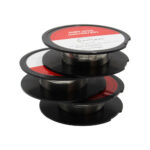
Best Wire for Electronics Projects
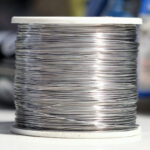
Is Ni80 Wire Suitable for DIY Heating Elements

Wire Grades Explained
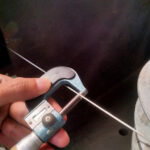
How Wire Diameter Affects Strength and Flexibility

How to Cut and Shape Wire for Custom Applications

Can Wire Be Used in 3D Printing?

How Wire Composition Affects Conductivity
